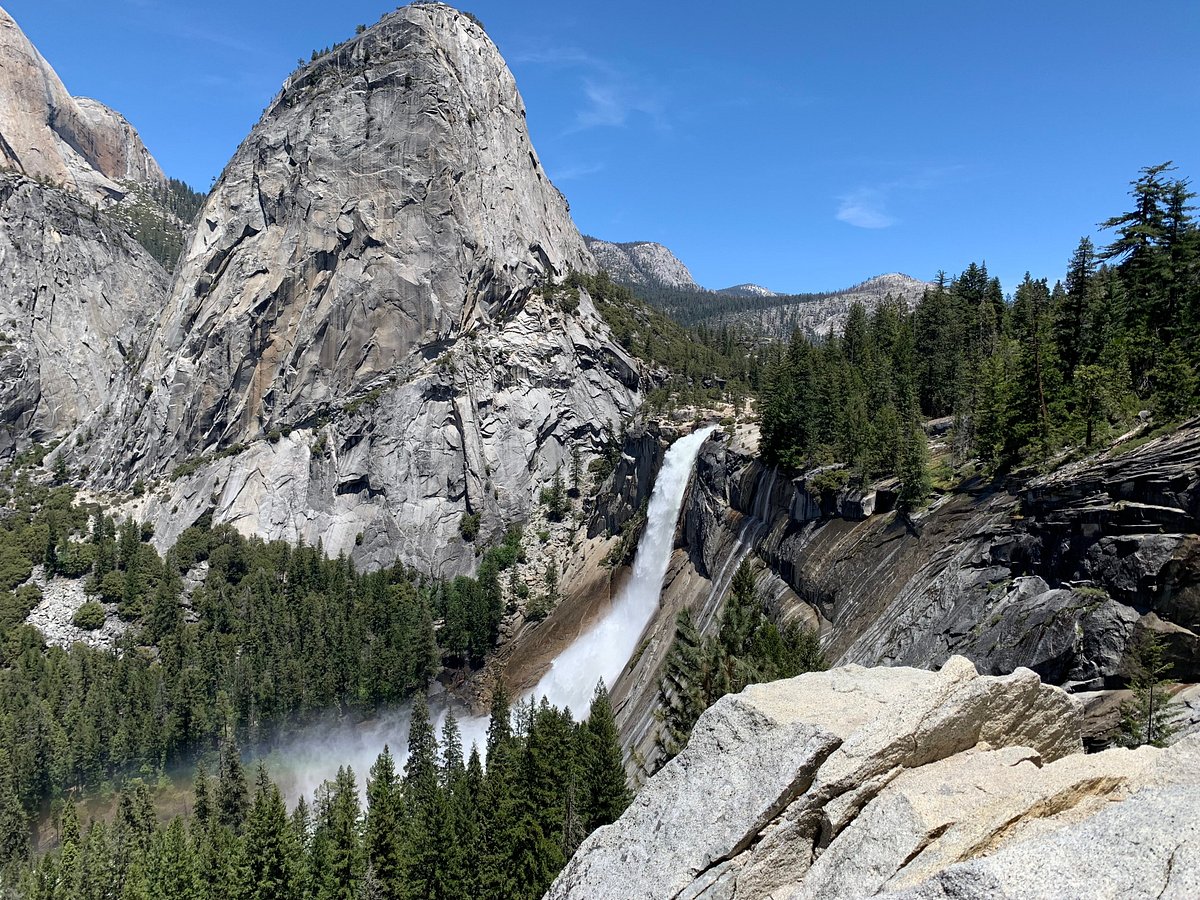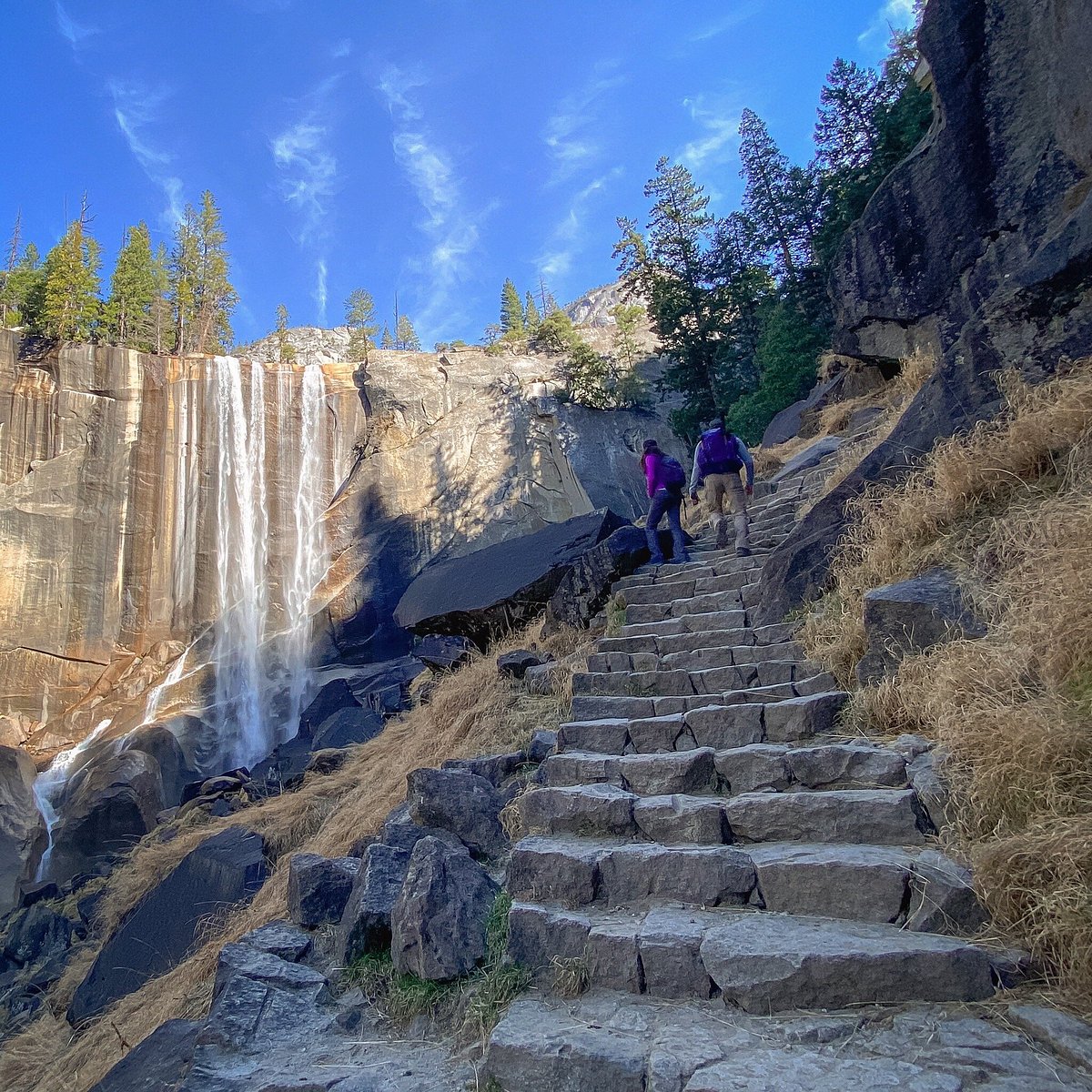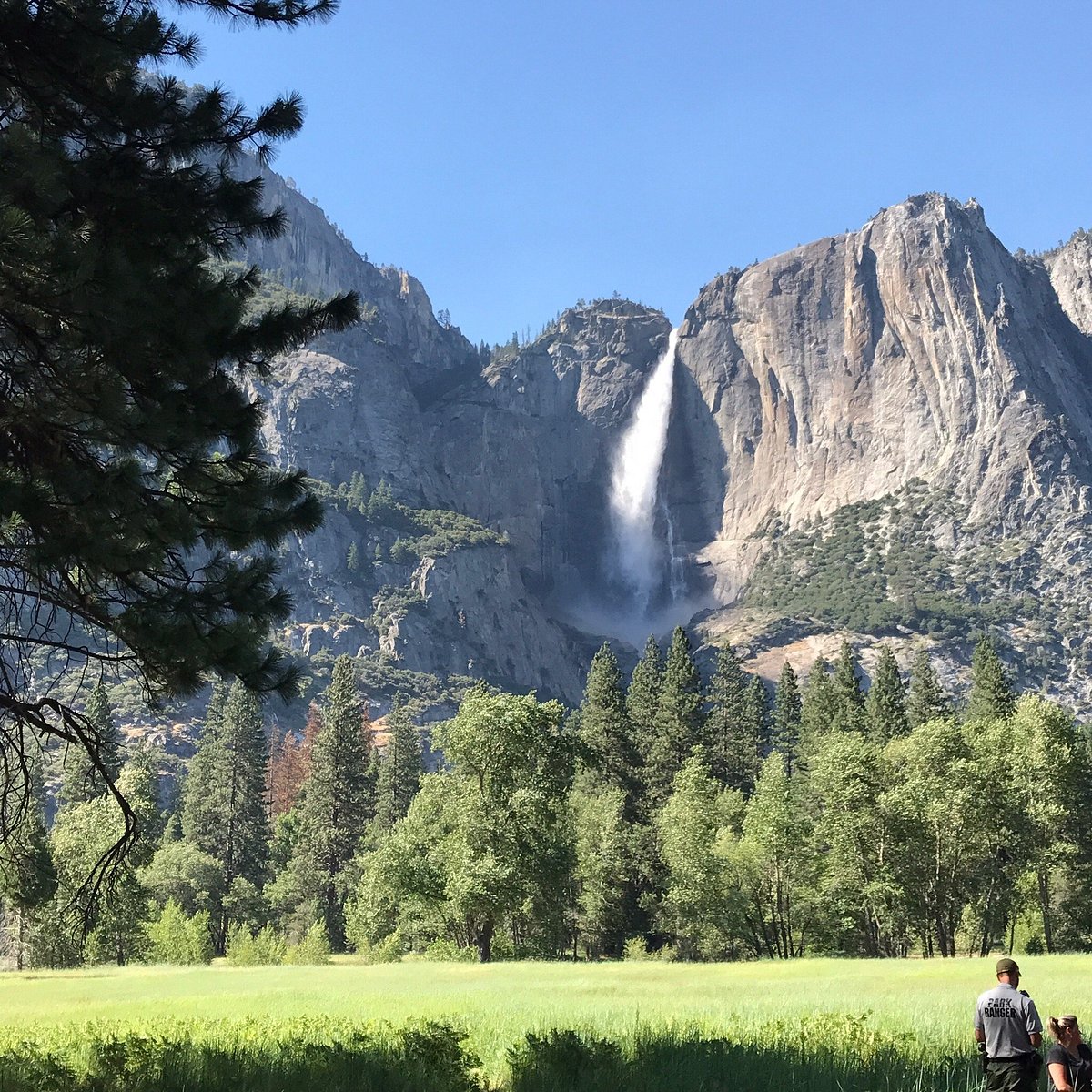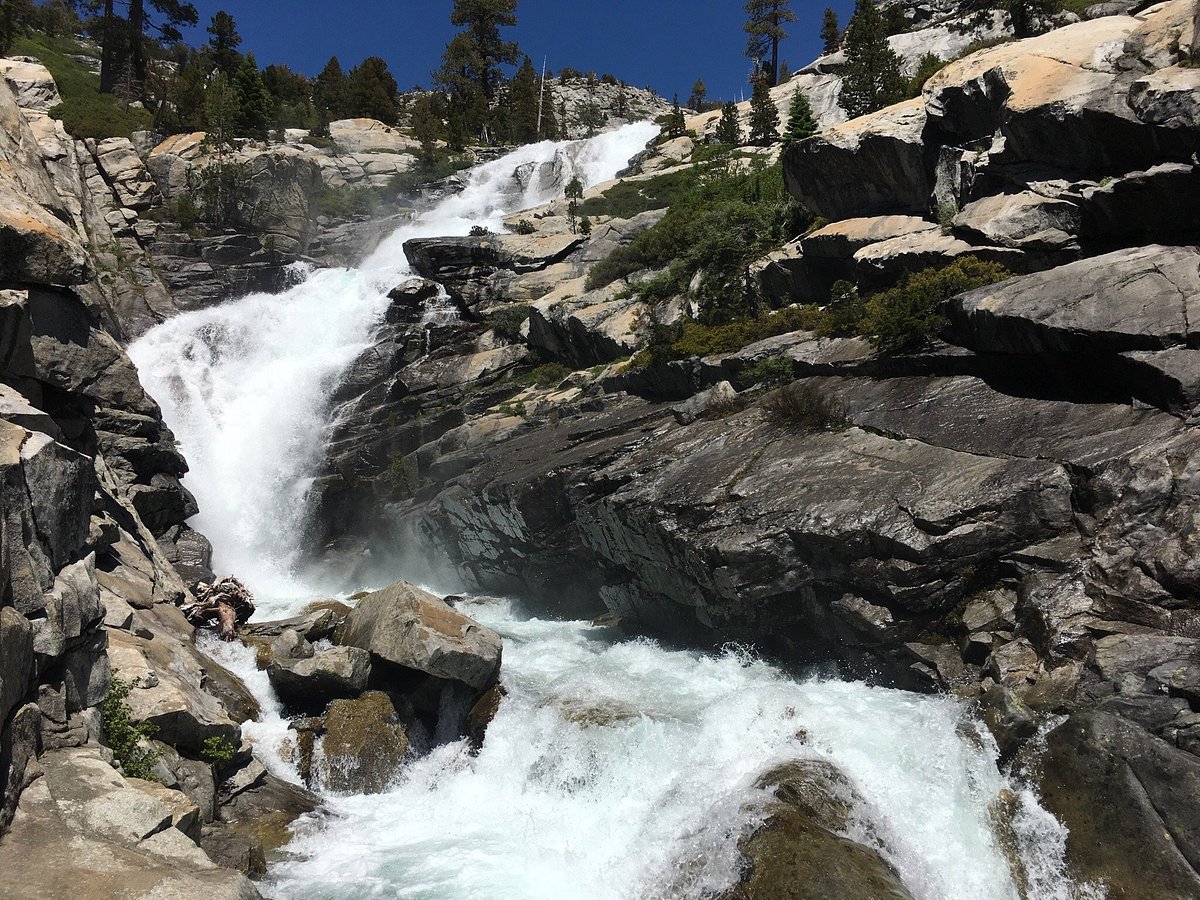The National Park, known as Yosemite, is located in the Sierra Nevada in California. It is known for its incredible granite cliffs, outstanding wildlife, and diverse wildflowers.
When visiting the park, you will have an opportunity to view the magnificent waterfalls, which delight the visitors with their beautiful scenery. Yosemite is home to large and small waterfalls created by melting snow and spring rains.
If you have decided to visit Yosemite National Park, here is our article to help you determine how to get the best view of the waterfalls and when is the right time to visit them.
About the Yosemite Waterfalls
The Yosemite Waterfalls are among the largest in North America. Generally, they reach peak flow during the late spring when snow melt occurs. Some waterfalls flow year-round, meaning you can witness their beauty at any time of the year.
While some of the waterfalls require hiking through steep trails to view them, others are visible from several points and are easily accessible. Given that many visitors come to see the outstanding waterfalls, safety is a top priority for such an adventure.
The moving water can give an unforgettable view and relax you and, at the same time, re-energize your body and soul.
Among the breathtaking views in Yosemite park are the rainbows also seen in the Yosemite Waterfalls and lunar rainbows that appear once the moon is full, and the sky is clear.
Stunning Yosemite Waterfalls You’ve Got to See
Yosemite Falls

Yosemite Falls is among the tallest waterfalls in North America and one of the world’s fifth-highest. It is made from three separate falls: the Upper Yosemite Fall, which is 1,430 feet, the middle cascades, with 675 feet, and Lower Yosemite Fall with 320 feet.
The waterfall is known for its colorful rainbow and moonbow during the spring, which you can capture in a photograph when it is in full flow. The ideal time to visit Yosemite Falls is in May and June when there is a peak and steady flow.
The waterfall is dry from August through October and creates a visible ‘ice cone’ at the base that is visible in the winter. Located in the heart of the valley, this is one of the most accessible waterfalls for visitors.
Certain parts of the loop trail are flat and paved, making it accessible to strollers and wheelchairs. The more experienced hikers can also go on a 7.6-mile roundtrip climb to reach the top and enjoy the beautiful scenery.
Location: Yosemite Valley
Height: 2,425 feet
Best view: from the Yosemite Village and Yosemite Valley Lodge
Flows: November through July, with peak flow in May
Bridalveil Fall

The Bridalveil Fall is a waterfall that flowers all year round, and it is the first waterfall you see once you enter the park. The waterfall is well-positioned, allowing you to capture breathtaking photographs.
While it flows year-round, Bridalveil Falls experience low water levels in the late summer and early fall. The waterfall is visible from the El Capitan (one of the world’s largest monoliths) and Half Dome (Yosemite’s most distinctive natural monument).
You can come to the waterfall’s base from the Valley floor through a short paved trail from the nearby parking area. During its peak flow in spring, you can also hear a thundering sound coming from the Bridalveil Fall.
Location: Yosemite Valley
Height: 620 feet
Best view: from near the tunnels on the Wawona Road or Big Oak Flat Road
Flows: all year round
Vernal Fall

Another waterfall that flows continuously all year round is the Vernal Fall, located below the Nevada Fall. It is one of the first waterfalls in the popular short hikes known as ‘Mist Trail’.
The Verna Fall, together with Nevada Fall, creates a cascade in which the known Merced river flows in the valley, creating a “giant staircase’.
In the same way as the other waterfalls in Yosemite, it has the best flow in May, while the water flow levels diminish during the end of summer and the early fall.
There are several options to see the Vernal Fall. One option is to hike through the ‘Mist Trail’ or get to Glacier Point for a more expansive view. Glacier Point is open from May to November and has a wheelchair-accessible trail.
Location: Yosemite Valley
Height: 317 feet
Best view: Washburn and Glacier Points
Flows: all year round
Nevada Fall
The Nevada Fall is a waterfall distinguished by its curved shape and mist. As a result, the waterfall makes for very picturesque scenery. Given the Merced river powers it, the Nevada Fall flows all year around.
When the water hits the rocks, it appears white, which is why it is called Nevada, coming from the meaning of ‘snowfall’ in Spanish. It is located below the granite dome known as Liberty Cap and is visible from Glacier Point in the distance.
The waterfall flows throughout the whole year but has the highest peak flow in May. Aside from Glacier Point, you can take a parallel route on the John Muir Trail to the valley to view the beautiful waterfall.
Location: Yosemite Valley
Height: 594 feet
Best view: from the Glacier Point
Illilouette Fall
The Illilouette Fall is a hidden gem inside the Illilouette Creek Canyon below Glacier Point. This waterfall is not visible from any road, but by hiking on more steep trails.
The waterfall flows all year round and is rewarding for hikers and adventurers who hike on more strenuous paths.
You will be able to see this waterfall once you head to the Vernal Fall. Before reaching the top of the Illilouette Fall, you can see the cascades with rock platforms where you can relax and even have a picnic.
Location: 2 miles from the Glacier Point
Height: 370 feet
Best view: from the Panorama Trail
Ribbon Fall

The Ribbon Fall is not only among the tallest waterfalls in Yosemite, but it is the highest free-leaping fall in North America as well.
That said, the waterfall is generally flowing from March through June. During the winter months, the Ribbon Fall looks like an ice cone formed at the waterfall’s base.
This waterfall flowers west of El Capitan, which makes for beautiful scenery. Hence, Ribbon Fall is included among the most beautiful Yosemite Waterfalls that you can visit in our post. You can get a wonderful photograph when the sun falls directly on the waterfall.
Location: Yosemite Valley
Height: 1,612 feet
Best view: From the road, you drive into Yosemite Valley, beyond the turn for the Bridalveil Fall.
Sentinel Falls

Sentinel Falls is also one of the tallest Yosemite Waterfalls. Located west of Sentinel Rock, it is composed of smaller but impressive cascades. It flows in spring and early summer and provides picturesque scenery.
The multiple cascades consist of six major drop sections, the largest being 500 feet, which is why Sentinel Falls is visible from several points.
You can view the gorgeous Sentinel Falls on Southside drive and near the Four Mile Trailhead. Also, you can view this waterfall across Yosemite Valley near the Leidig Meadow or while hiking the Upper Yosemite Fall Trail.
Location: Yosemite Valley
Height: 2,000 feet
Best view: along the Southside Drive near the Sentinel Picnic Beach Area
Horsetail Fall

The Horsetail Fall is one of the rarest Yosemite Waterfalls. It flows for only a few months in the winter but gives a magnificent sight. Its location enables the popular Yosemite Firefall when the sun is setting and illuminating the fall at the right angle, making the water glow as fire.
During this time, all the meteorological and hydrological formations align and light the water and mist golden and fiery red. The fiery display is rare but is excellent for taking photographs.
An important thing to know is that the park is under restrictions during the Yosemite Firefall, which is typically in mid-February due to crowd control. Hence, you will need a reservation if you plan on witnessing this gorgeous phenomenon.
Location: Yosemite Valley
Height: 1,000 feet
Best view: the Park at the El Capitan picnic area
Wapama Falls
Wapama Falls is one of the most powerful waterfalls in Yosemite National Park. This majestic waterfall flows the whole year around but experiences low water levels in the late summer and the early fall.
During some springs, it flows over the footbridges near the waterfall’s base, which is why it is closed. If you visit Wapama Falls in spring, you will also be able to see colorful wildflowers surrounding it for even more spectacular scenery.
You can see the Wapama Falls from the park at the O’Shaughnessy Dam or hike to the falls to come close to its base. It is located in Hetch Hetchy, a part of Yosemite park that doesn’t require reservations, making the Wapama Falls a good option for spontaneous adventurers.
Location: Hetch Hetchy
Height: 1,400 feet
Best view: the Park at O’Shaughnessy Dam
Chilnualna Falls

The Chilnualna Falls is a waterfall that hides between twists and turns of the rock and, as a result, makes it impossible to view the whole waterfall from one spot. It is made of five tiers and gives a wonderful display.
Chilnualna Falls is not visible from the road. It is only accessible through steep and strenuous trails, which is rewarding for many hikers throughout the year since it flowers all year round. The trail to this fascinating waterfall is intended for strong and experienced hikers.
Location: Wawona
Height: 2,200 feet
Best view: the trail leading to the waterfall
Tueeulala Falls
The Tueeulala Falls is an impressive waterfall that is fed by melted snow. Hence, it is a seasonal waterfall and its flow season depends on the size of the snowfall and when it will start melting. The cascade drops free for 600 feet, hitting a ledge and sliding down 280 feet, giving a beautiful sight.
Location: Hatch Hatchy
Height: 880 feet
Best view: via the round-trip hike along the edge of Hetch Hetchy Reservoir
Silver Strand Falls
The Silver Strand Falls is a waterfall that is often overlooked. It gives a scenic view and flows approximately from December through April. Once you look above the Wawona tunnel, you will be able to witness the beauty of this wonderful waterfall.
Location: Yosemite Valley
Height: 574 feet
Best view: from the Wawona Tunnel
Lehamite Falls
Lehamite falls are formed from a series of cascades that slide down the Indian Canyon and Yosemite Valley. They are often overlooked because of the Yosemite falls that are nearby.
The Lehamite Falls flow for only a few weeks in the spring, which is something to keep in mind when you plan on visiting Yosemite National Park.
Location: Yosemite Valley
Height: 1,180 feet
Best view: from Cook Meadow
Waterwheel Falls
Waterwheel Falls is one of the unique waterfalls in Yosemite National Park. The waterfall got its name since its water rushes toward the Tuolumne River and hits speed bumps of rock that then force the water into the air before gravity pulls it back down, creating a massive waterwheel.
You can only reach this waterfall on foot by going on an 18-mile round-trip. The waterfall flows the whole year with a peak flow in May. Given the flow of the water, Waterwheel Falls gives magnificent scenery.
Location: Tuolumne River
Height: 800 feet/ the water goes up to 20 feet in height
Best view: hike via the Glen Aulin Trail
Conclusion
Now that you know more about the stunning Yosemite Waterfalls, you can plan your trip according to their flow and your preferences.
By staying informed about the waterfalls, you can get the best views and enjoy a wonderful and adventurous experience.
Given their beauty and the nature surrounding them, the waterfalls in Yosemite Natural Park are very popular among travelers and hikers.





